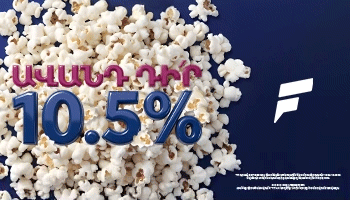It is largely due to Turkish pressure on the film industry that a movie like “The Promise” was not made sooner. In the 1930s, MGM acquired the film rights to “The Forty Days of Musa Dagh,” Franz Werfel’s best-selling novel inspired by the true story of several thousand Armenians who survived a mountaintop siege. But lobbying by Turkish Ambassador to the United States Mehmet Munir Ertegun (whose son Ahmet went on to found Atlantic Records) forced the studio to drop the project. Recent years have seen a couple of small-scale indie features that deal with the tragedy, including Armenian Canadian director Atom Egoyan’s “Ararat” (2002) and Turkish German director Fatih Akin’s “The Cut” (2014).
“The Promise” was also developed outside the studio system, financed entirely by the late mogul Kirk Kerkorian, who owned MGM for many years and later founded Survival Pictures in 2012.
“The ‘promise’ means so much to us personally,” said Esrailian. “The promise was from Mr. Kerkorian to make the film. The promise was from us to complete the film. The promise is for us to never forget. And the promise is for us to also vow to do something so that it never happens again.”
With a budget of nearly $100 million, the film is one of the most expensive independent films ever made, according to Variety. And the entire endeavor is not-for-profit: Survival Pictures has committed to donating all proceeds to nonprofit organizations, including the Elton John AIDS Foundation and “other human rights and humanitarian groups.”
“The Ottoman Lieutenant” was also made with private financing, in this case from a group of Turkish producers working in film, TV and advertising. They teamed up with producer Stephen Joel Brown (“Seven”), as well as an American director, Joseph Ruben (“The Forgotten”), and screenwriter, Jeff Stockwell (“Bridge to Terabithia”), to make a feature that would have high production values.
In an interview, Brown maintained that their film was not seeking to promote a particular political agenda, describing it as “a classic love story, set at a time and place that we really haven’t seen in cinema.”

While foregrounding the clandestine romance between the American nurse and the Ottoman lieutenant, the movie does not completely shy away from showing the suffering of the Armenians, particularly in one crucial scene involving Turkish soldiers. “That [scene] seems kind of unequivocally saying, Turks force-marched Armenians and then slaughtered them along the way,” said Stockwell, the screenwriter. “Whatever you want to quibble about, there it is. Now, is there enough? Is it soft-pedaled?”
Nevertheless, focusing the action on the town of Van and showing one of the few Armenian insurgencies, which took place there in April and May 1915, has the effect of promoting the Turkish narrative, which points to the Van resistance as a justification for repression of the Armenians.
“The official Turkish argument is that deportation of Armenians was a response to Armenian uprisings,” said Akcam (who has not seen “The Ottoman Lieutenant”). “This is the reason the Van event is crucial in Ottoman Turkish historiography. This argument is not correct, because . . . we know that the decision for deportation was already taken before the Van uprising.”
(The studio did not make the Turkish producers available for interviews.)
A sizable contingent of Turks, as well as many in the Armenian diaspora, have been aware of “The Promise” for some time. Last October, outlets including the Independent reported that it had more than 85,000 ratings on IMDb, nearly all of them either 1 or 10 stars. Given that the film had had just three public screenings by that point, it seemed clear that users who had not even seen it were “rating” it based purely on their politics.
Similarly, before “The Ottoman Lieutenant” had even opened, it was quickly dismissed in Armenian American publications and in YouTube comments sections as Turkish propaganda.
While neither movie is likely to settle the debate over the events of World War I, these portrayals might prompt some Americans to look into the historical record — and draw their own conclusions.



























